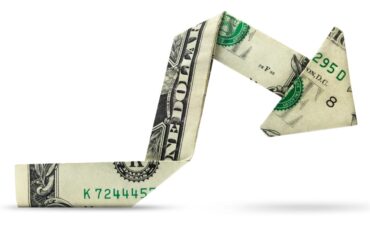In the ever-turbulent sea of economic fluctuations, one may find solace in a pair of seemingly disparate, yet equally consequential phenomena, both of which provide a fascinating lens through which to view our current economic conundrum.
In the first instance, we observe the enigmatic beast known as Artificial Intelligence (AI). AI, dear reader, is not unlike a double-edged sword. On the one hand, it stands as a testament to human ingenuity, promising to boost corporate margins and spearhead a new wave of economic growth. Goldman Sachs, in their wisdom, suggest that AI could enhance net margins by as much as 400 basis points over the coming decade. Yet, the other side of this gleaming blade reveals a more uncertain future, riddled with unpredictability, regulatory unknowns, and the potential disruption of traditional economic structures. As we muse over this, let’s remember that the path of progress often weaves through the unknown – a fact that neither diminishes its potential nor mitigates its risks.
The second point of interest emerges from the corridors of power in Washington, D.C., where the unending saga of the US debt ceiling continues to unfold. The whispers of optimism emanating from the Capitol have nudged the S&P 500 into a mild rally, an occurrence that may lead the less skeptical among us to breathe a sigh of relief. However, as we’ve learned over the years, one must approach such optimism with a healthy dose of caution. The market, a complex beast it is, has a tendency to price in the rocky ends rather than the potential for smoother outcomes. It might behoove us, as vigilant observers, to stay attuned to this underpriced potential, as it could present unexpected opportunities.
This week’s market events, ranging from jobless claims to home sales data, serve as yet another reminder that the economic fabric is a complex tapestry woven from myriad threads. Each thread, be it stocks, currencies, bonds, or commodities, carries its unique weight in this tapestry. As we navigate through these intricate interconnections, our challenge remains to discern the patterns, shifts, and anomalies that could signal the next big wave.
In the end, dear reader, our musings serve not to provide certainties (for those are a rare commodity in our world), but rather to provoke thought and conversation. After all, it is through these contemplative dialogues that we might better navigate the enthralling maze of economic intricacies that lay before us. And so, until next time, I leave you with the words of the great John Maynard Keynes, “The difficulty lies not so much in developing new ideas as in escaping from old ones.” Let’s escape together, shall we?


